What if Hamilton’s Hard Tyre Gamble actually Worked? 🇯🇵
Suzuka 2025 | Strategy Breakdown + Hypothetical Conditions
Let’s talk about the most debatable decision in the top 10 at Suzuka this weekend: Sir Lewis Hamilton showing up with hard tyres amid all medium runners and setting an alternate timeline for the race. Lewis tried to play the long game—and it almost paid off.
Lewis Hamilton’s strategy didn’t pay off because, on a track where thermal degradation has traditionally played a significant role, we saw virtually no drop in lap time performance with the Hard and Medium compounds, even over long stints.
Pirelli said that was due to the low ambient and track temperatures, the lowest recorded at Suzuka since 2011.
But what if we tweak the variables? Imagine just 5–10% more graining, especially through Sector 1 and Spoon.
Hear me out:
The Setup: One-Stop, Inverted Strategy
Ferrari had nothing to lose and everything to gain. Starting P8, Lewis was the only top-10 driver who didn’t bolt on the yellow mediums. Instead, he chose the hard C1s — hoping to “do something different,” and outlast the pack by running longer, get clean air, and finish the race on faster rubber when the car was lighter.
We know all of this because during the Drivers Parade, he told Laura Winters that he was hoping for a wet race, but it was obviously going to be a dry one.
“It’s not easy to overtake here, so I’m trying to figure out how to do something different from what’s around me. I’m not in a great position in P8, so from there, it’s difficult to progress.” – Lewis Hamilton pre-race.
The strategy chart:
By the time Hamilton pitted, he had 10+ laps in clean air, while top drivers like Norris, Piastri, and Leclerc were fighting traffic around lap 23.
What If Medium Tyres Degraded More?
The mediums held up a little too well. The track temperature was a comfy 21°C, with no surprise wind or high-deg zones. So, I decided to simulate a bit more degradation:
With this curve, Hamilton’s hard tyres start to gain time from Lap 15 onward. By Lap 25, he’s closing in at 0.4–0.6s/lap.
In a more digestible form, this is what we’re looking at:
Clean Air Simulation: Hamilton’s Advantage
Key drivers for this simulation (ie. Russell) rejoined the race into traffic and DRS trains. Hamilton had approximately 10 laps of clean air in P2 before pitting. Here’s a model of his delta gain over that period:
This chart illustrates Lewis Hamilton’s theoretical gain per lap, peaking at +0.5s by lap 30 in a race where the hard tyre keeps a consistent pace vs medium tyre drop off.
I assumed that Antonelli’s pace drop increases each lap from ~0.2s to ~0.5s due to graining. Hamilton’s consistent pace = theoretical net gain of ~3.35s seconds before his pit stop. Factor in the (actual) pit-stop times, Hamilton’s 2.18s vs Antonelli’s 3.12s, the scenario changes everything in Hamilton’s favour.
Sitting on a +4.37 seconds net gain, Lewis comfortably rejoins the race ahead of Antonelli, completing a successful undercut.
Alternate Ending: The Ideal Execution
We’ve dealt with degradation and possible graining, but one thing still held Hamilton back and that was pace.
Lap 30: Boxes for mediums; pit stop: 2.1s and successful undercut on Antonelli.
Hamilton’s real cumulative pace between laps 33 and 41 was around ~0.12s to Russell, not enough to challenge for P5. In a theoretical scenario where the medium tyre works in favour of Hamilton’s Ferrari and he has more pace than Russell under lighter fuel we can simulate (a) more consistent pace of around –0.3s/lap.
By Lap 46, Hamilton could realistically be within DRS and ready to launch an attack and if we are talking skills – we know 9/10 times he manages to do it.
Hypothetical Results Table
This is all if, and buts. We know Formula 1 doesn’t deal in hypotheticals, it deals in execution, but with just (a) a little more deg + graining and (b) more pace in the Ferrari, Lewis Hamilton’s alternate strategy could have worked in his favour, putting him right behind his teammate, Charles Leclerc.
He almost made it work. And that’s probably still worth talking about.

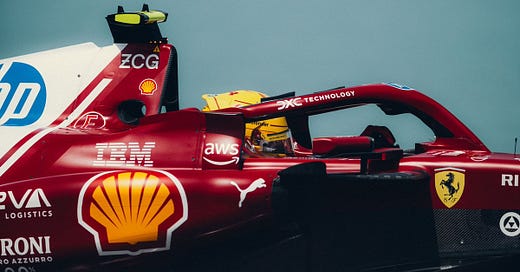


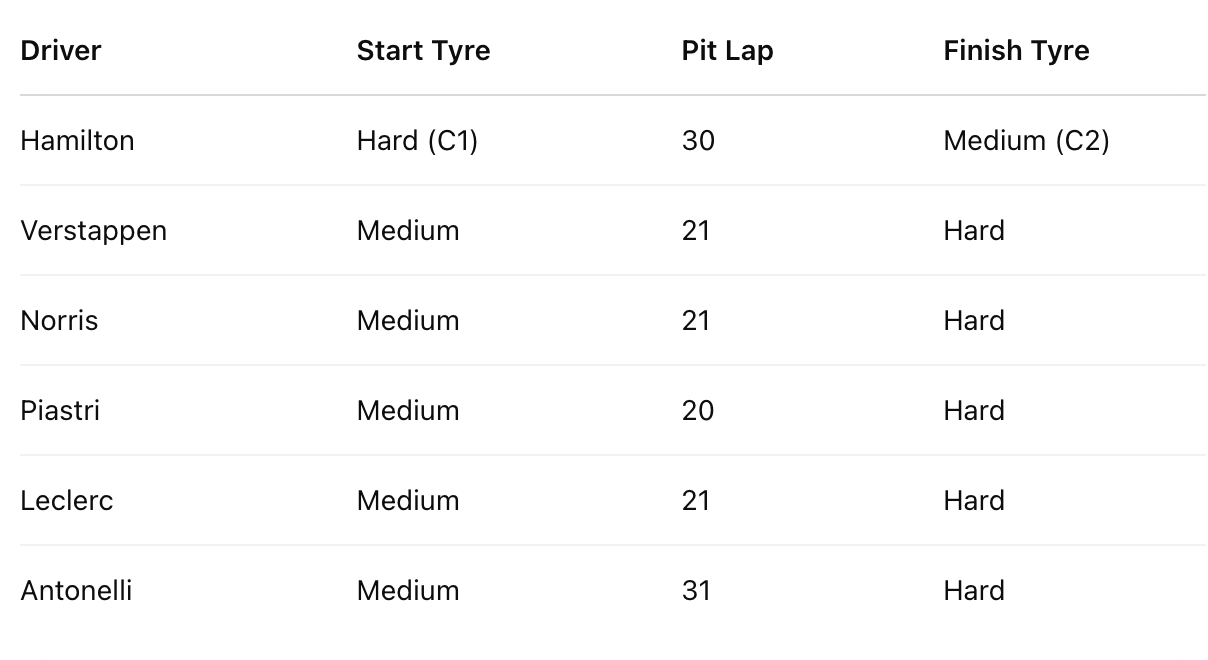
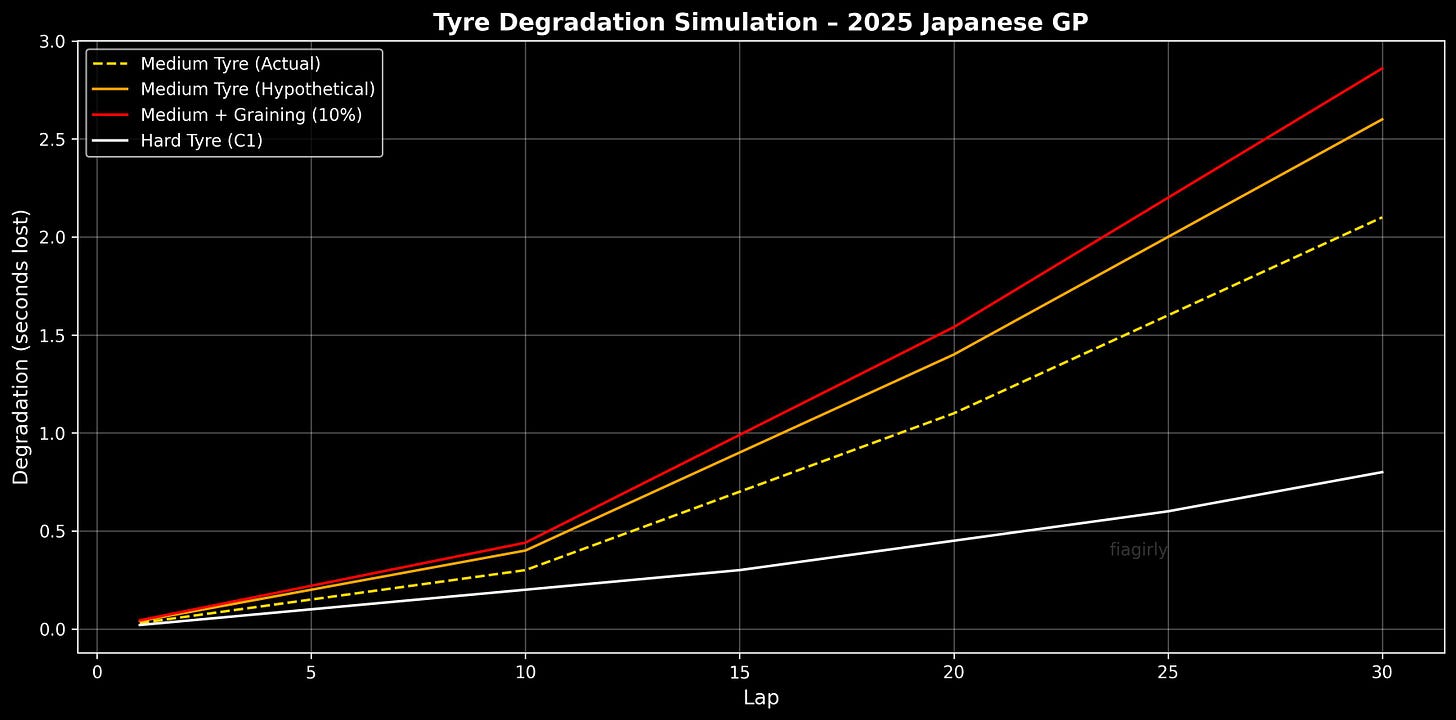

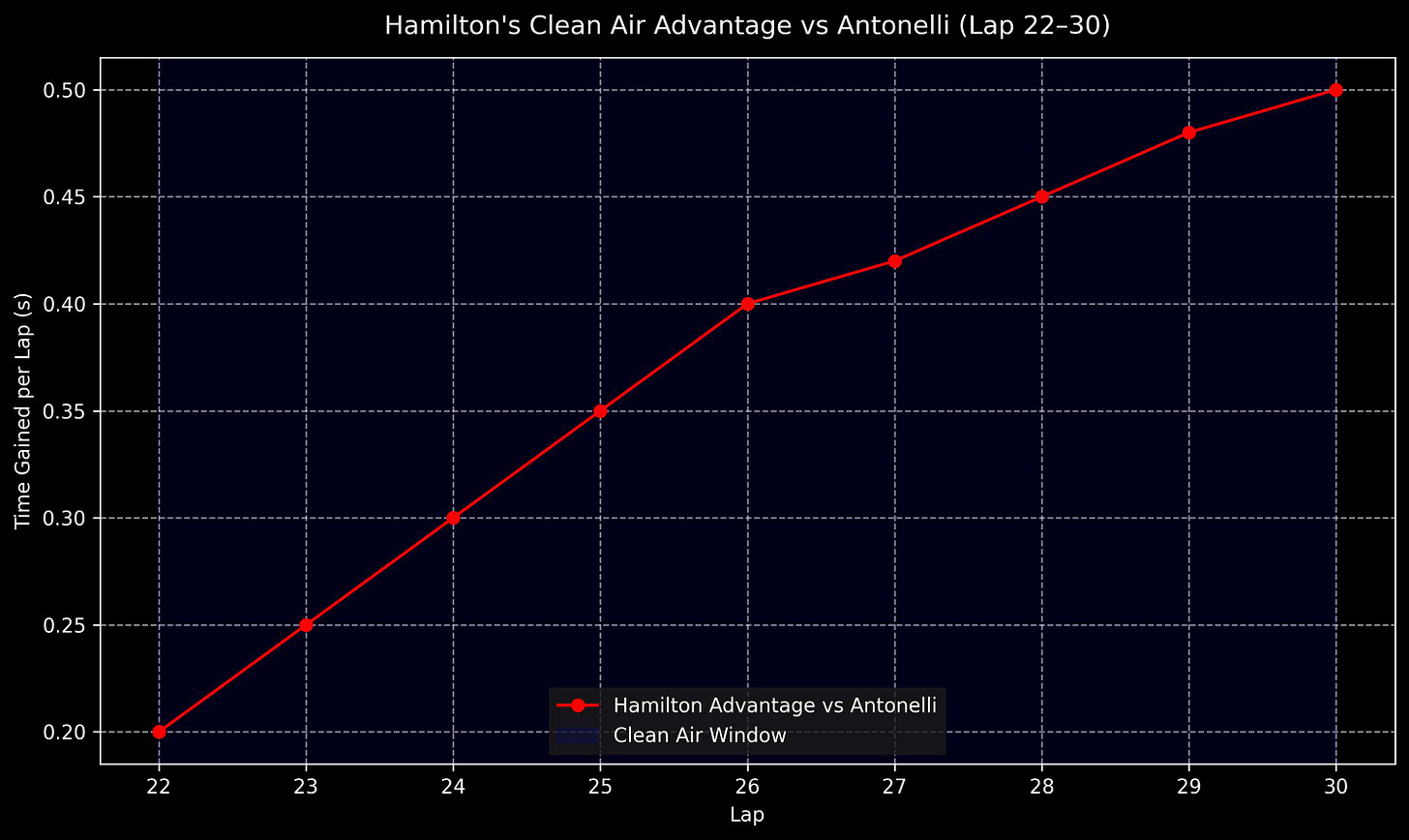
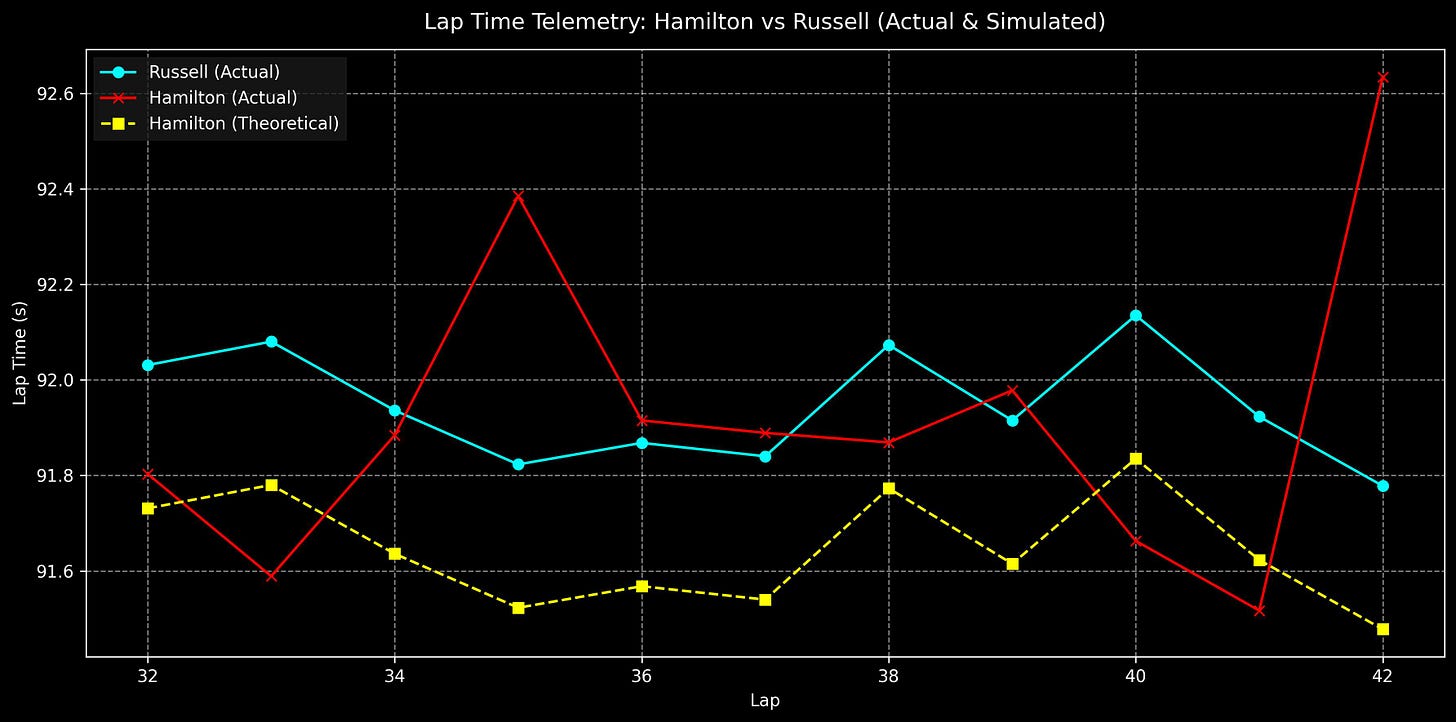

It’s important to go beyond actual results and consider different scenarios. This publication explores and explains that well. Ultimately, I hope Ferrari is fully dedicated to improvements and better strategies.
Absolutely. And he overtook